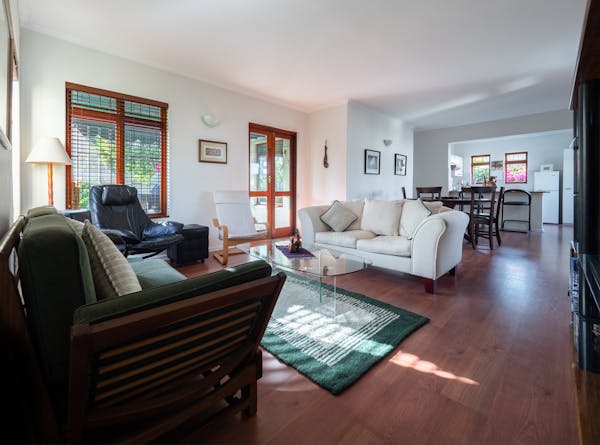Humans have lived together for the longest time. However, the word coliving erupted recently, which means living together in harmony. Typically, coliving means a communal lifestyle. It is where people sharing similar values live together in a shared space or home. You may wonder what this communal living is and how it comes to be.
Worry not, as this article looks at the ins and outs of co living in the modern world we live in today. Coliving may take in three or more unrelated people that decide to live together in a communal focus.
Debunking Co living
Coliving being a rental trend is proliferating in popularity among households. Many companies offer residents shared living spaces with private bedrooms but other shared communal spaces.

In essence, this appears like a roommate situation, but it is a bit different. Coliving differs from roommate living in various ways:
- Luxury amenities
- Reduced roommate conflicts
- Living with like-minded persons
- Large coliving community
- Lower living costs
Coliving has taken the bigger share in residential housing in major cities today. Many residents moving to these cities look for shared housing plans to reduce the cost of living. Unfortunately, most living arrangements such as roommates do not have a good reputation. Finding a roommate that matches your wants, likes, dislikes, and lifestyle is not easy.
When living with other people, conflicts usually erupt regarding pets, money, etc. These could sour the relationship between the occupants of the home. Remember moving to a new city, getting a good house, and matching a roommate who fits your lifestyle is never a walk in the park.
Coliving is the solution to such problems. Coliving companies will make sure you live in a serene environment, provide individual lease agreements, offer luxury amenities and cleaning services to new residents. They will also match you with fellow roommates that share your lifestyle and ideologies.
What Does the Space Look Like?
Understand that coliving spaces are diverse even though these housing arrangements are found in large cities. The coliving space appearance will depend on the company you choose. There is always a wide variety of homes you can choose from.
For example, in Los Angeles, you might come across a 144 sq. ft home with communal spaces, a shared bathroom, and an apartment unit. Some coliving apartment units even have two bedrooms.

Most of the coliving homes have fully furnished communal areas. These spaces entail classy artwork and modern furniture and finishes. The rooms are decorated to maximize coziness and openness. You are free to liven up your space in the coliving home such as your bedroom. However, essentials such as dish soap, toilet paper, and towels are already available.
Some coliving companies will even provide additional in-unit amenities like outdoor areas and gyms free of charge.
Challenges facing co living
There are several challenges that this type of living faces.
Finding a coliving space comparable to your needs is not straightforward, you might have to compromise. You may have to settle for a home that does not have the amenities and facilities you would wish to have.

Coliving spaces may not accommodate people with particular health conditions, as they are quite small. It is tough on people who want to manage their personal lives. Problems like social anxiety or depression may be intensified when you live in such small arrangements where there is no privacy or space to relax if needed. For example, in an apartment unit, two or more roommates sharing the same bathroom will be a problem because there is no separation between the rooms.
There can also be issues when it comes down to socializing with other people in different spaces with different preferences and standards. That may be due to similar living situations such as noise, smells, cleaning issues, etc., that can make your experience unpleasant at times.
Advantages of co living
Coliving is advantageous. People living in coliving home setups enjoy various perks such as:

- Some co living homes have public areas for open clubs and events, but most of the time, the spaces are more private than other types of residences. Coliving spaces are more private than other housing, giving you a sense of control, privacy, and comfort.
- This setup is also significantly cheaper for the average person to own, maintain, and rent compared to all other types of dwellings. You will save money on both equipment and utilities and on monthly dues that go into allowing access to common areas like kitchens and washing machines.
- Coliving homeowners save money on routine maintenance and repairs and have lower fuel and heating costs.
- Coliving housing is generally more sustainable than other types of dwellings because it uses less energy and resources throughout the year. That will positively impact the environment. People who live in coliving homes tend to take better care of their homes, contributing to a more environmentally friendly lifestyle.
Disadvantages of co living

- Coliving spaces are in short supply, so finding a roommate is rarely an easy task. Even within coliving spaces, you will often find neighborhoods with a lack of shared living space.
- Unlike renting an apartment or home, when you live in a co living space, your landlord usually has more control over the area.
- The biggest disadvantage of coliving homes is that they do not often have the amenities that most people desire; however, this can vary from place to place. Many co living living spaces provide communal kitchens and laundry facilities that can be used by all residents rather than just one person.
- Some people also argue that these dwellings are explicitly created for single people or groups of friends. It, therefore, tends to become too cramped for many families.
Wrapping Up
When making an informed decision about the option of living in a coliving home or apartment, it is essential to evaluate the different aspects that are included.
How many people you will be sharing with, whether the environment and amenities will suit you, and if you have chosen the right location should all factor into your decision.
Having a clear idea of these aspects will allow you to make more informed decisions about where to live, whether alone or in a shared space.








